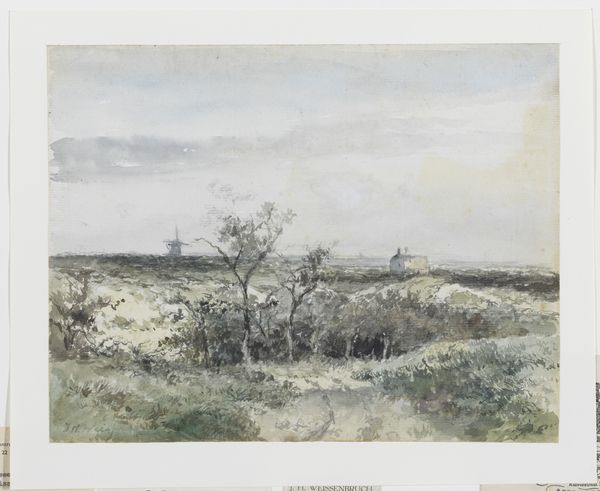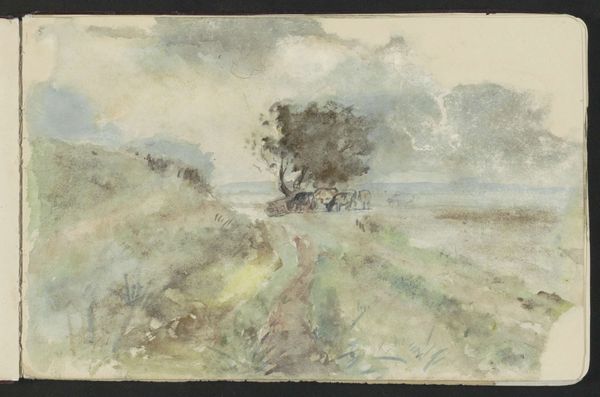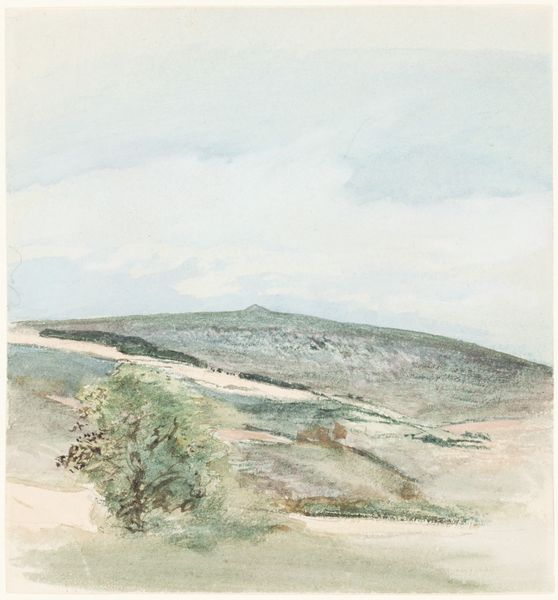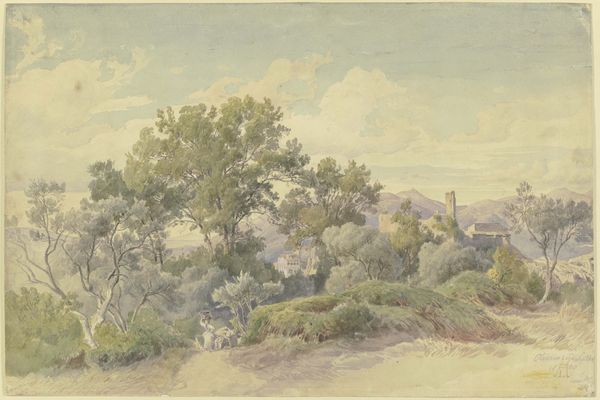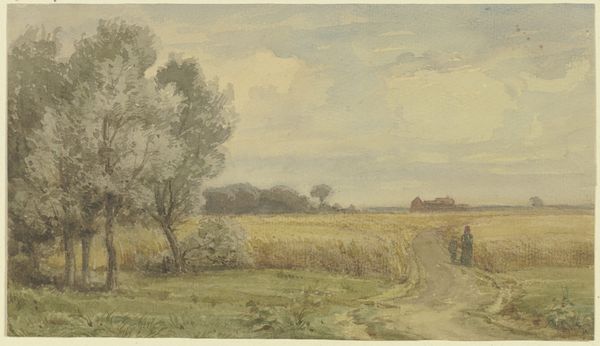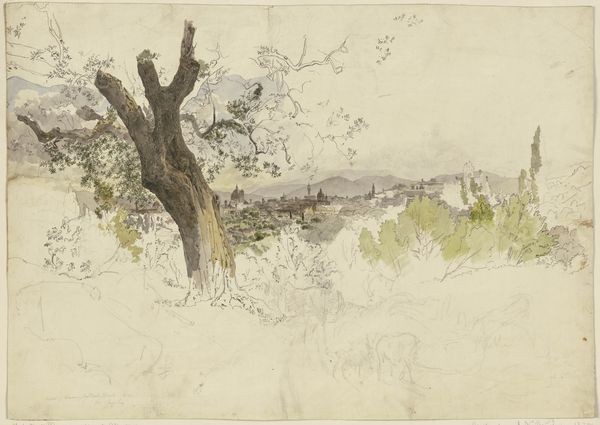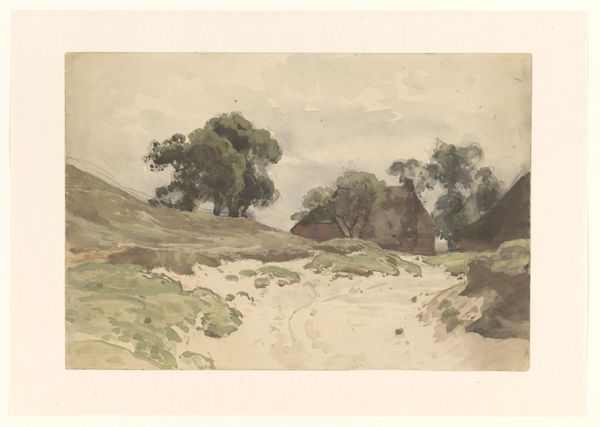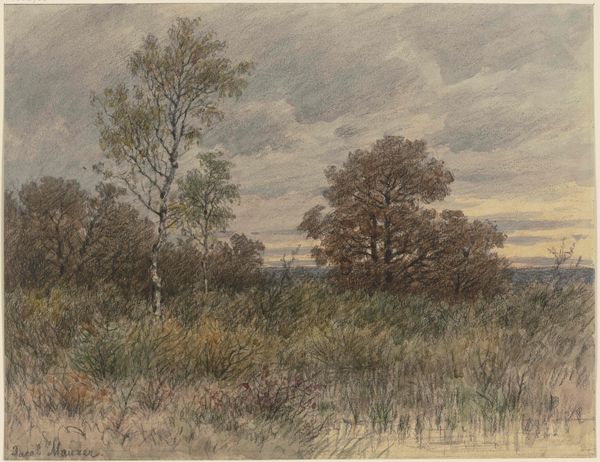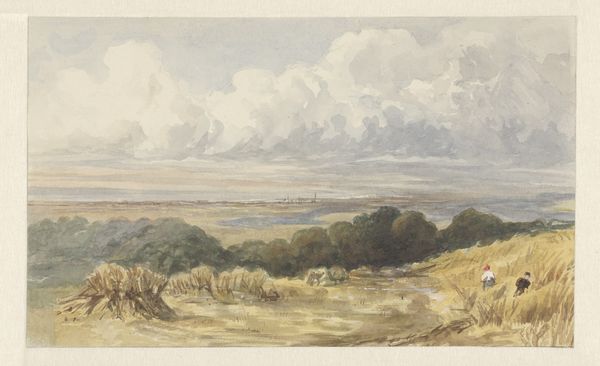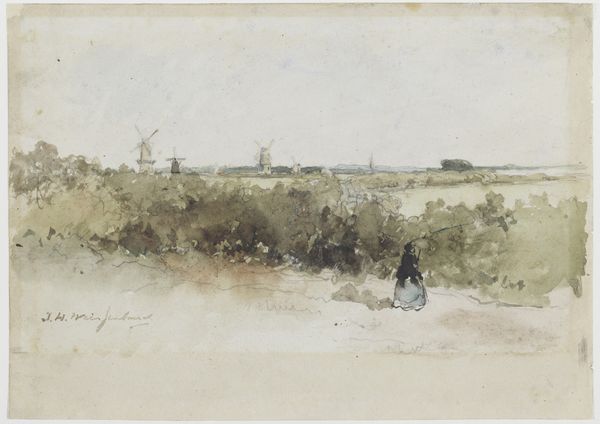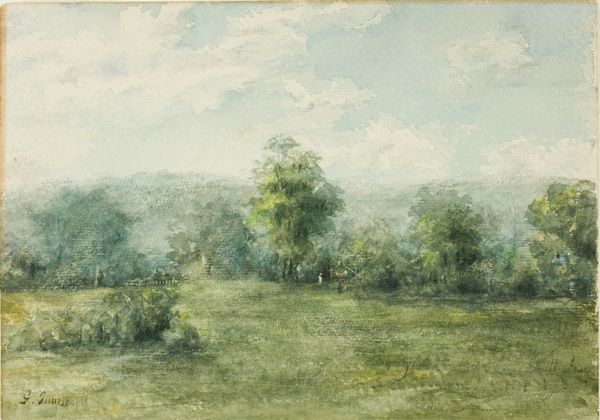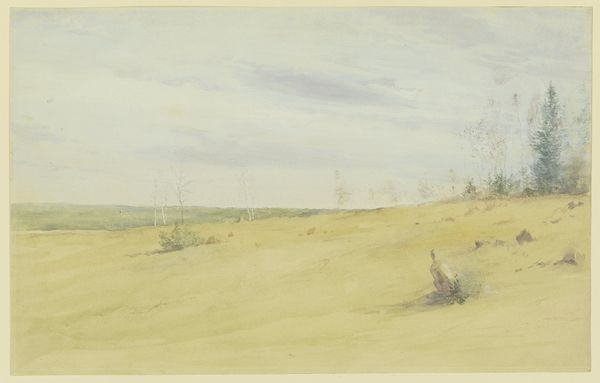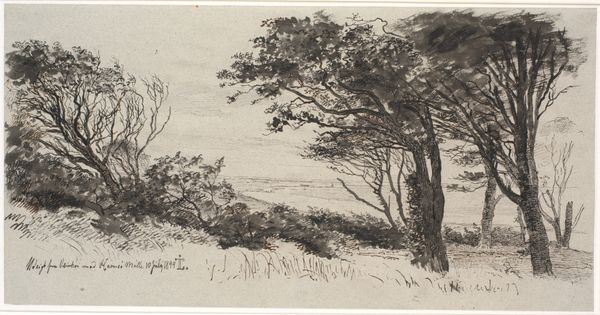
watercolor
#
dutch-golden-age
#
impressionism
#
landscape
#
oil painting
#
watercolor
#
watercolor
#
realism
Dimensions: height 154 mm, width 214 mm
Copyright: Rijks Museum: Open Domain
Curator: Immediately, the mood is somber, meditative. A wash of gray over everything softens what might otherwise be a rather stark scene. Editor: Here we have Johan Hendrik Weissenbruch's "Landschap met knotwilgen langs een sloot," painted somewhere between 1834 and 1903. The title translates to "Landscape with pollard willows along a ditch." It’s currently held at the Rijksmuseum. Curator: Pollarded willows – trees shaped through severe pruning. The term itself contains a strange violence. For what purpose? What impact did this farming practice have on the laborers of that time, to manipulate growth like this? Editor: That manipulation certainly served a utilitarian function. Willow branches were vital for basket weaving, wattle fences... necessities for rural life. The image calls to mind archetypal Dutch landscapes, though there's a unique lack of glorification here. The color palette is desaturated; even the sky seems heavy. There are no people. Only these bent trees are a testament to a life lived. Curator: Yes, an elegy in watercolor. The light, though subdued, is critical. It throws emphasis on these gnarled trees, giving them personality, making them the subject. Consider the cyclicality of it all: pruned back, then regenerating, then pruned again. Doesn't this echo the societal cycles of oppression, resistance, resilience, and the patterns within communities? Editor: Indeed. I'm interested, too, in how Weissenbruch captured the atmospheric perspective, or rather how he used watercolours for this purpose. Notice how he creates a receding plane of land in the background. These open, calm planes stand in marked contrast to the tight knot of shrubbery at the front of the composition, close to the viewer. Curator: I think what stays with me is this image of enduring, manipulated nature. How labor impacts identity; how it shapes not just the land but also the human psyche, marking it, too, with cycles of growth and constraint. Editor: I concur. And, ultimately, I see the painting's enduring message is the quiet strength found even in the seemingly barren landscape, reflecting a certain tenacity found in humanity and nature alike.
Comments
No comments
Be the first to comment and join the conversation on the ultimate creative platform.
